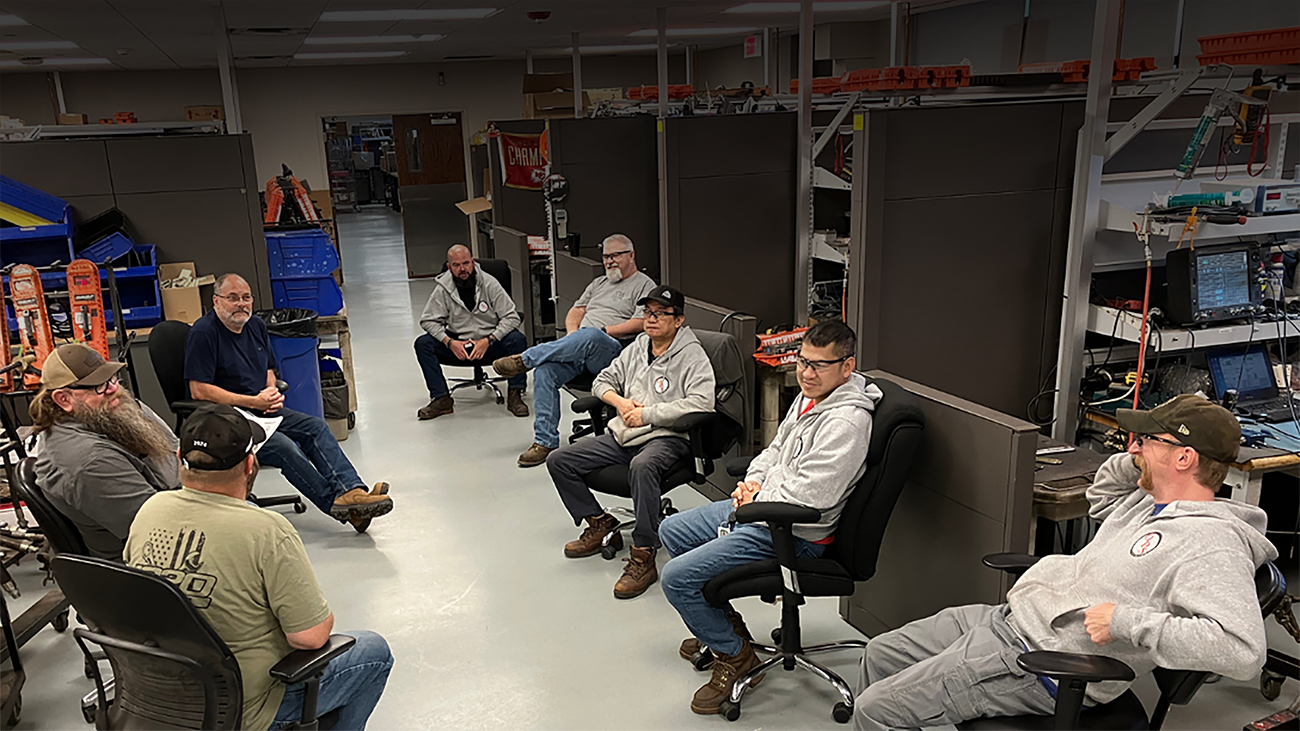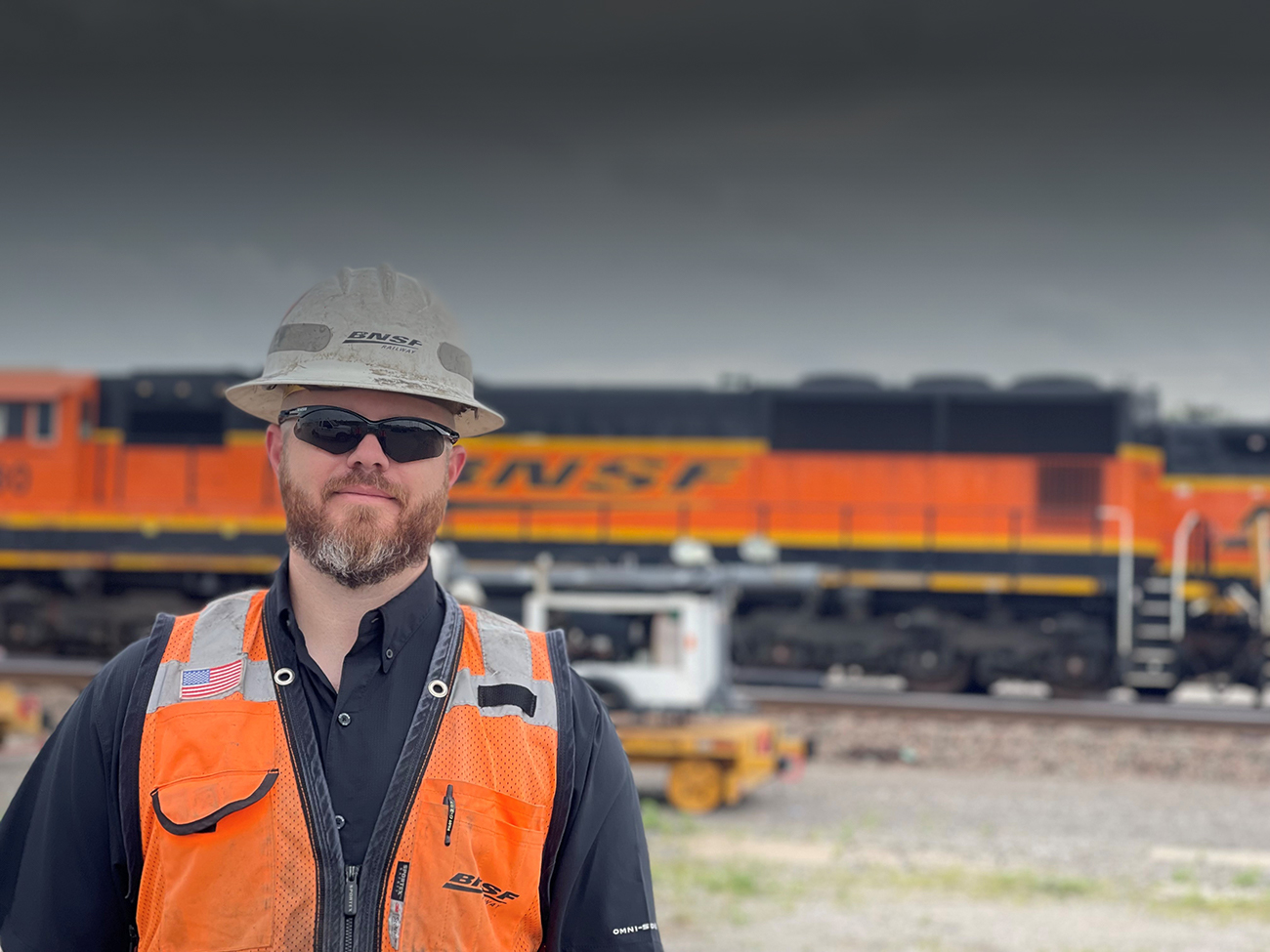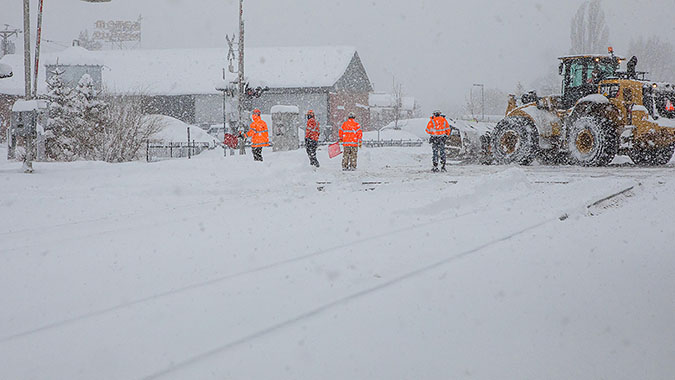
At BNSF, we’ve got winter down cold
By MIKE PAGEL
Staff Writer
Long before the first day of winter, BNSF has been preparing.
In the face of significant weather events in recent years, our preventive efforts have proven effective. Since 2000, we’ve reduced the rail equipment incident ratio by nearly 70%, partially due to our winter action plans.
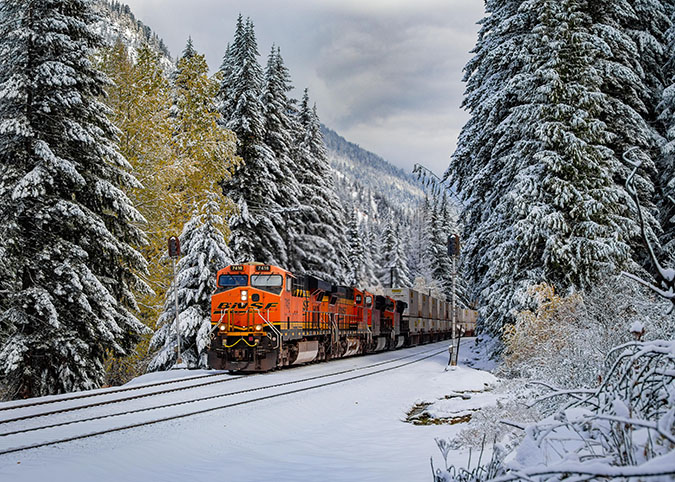
Every year, our 10 divisions evaluate and refresh winter action plans to ensure that resources and procedures are in place based on their unique climate. These include how to:
-
Prepare employees to safely work in winter conditions
-
Prepare and position snow-removal equipment and supplies, as well as surge resources
-
Quickly add manpower, equipment and supplies to address and recover from service interruptions
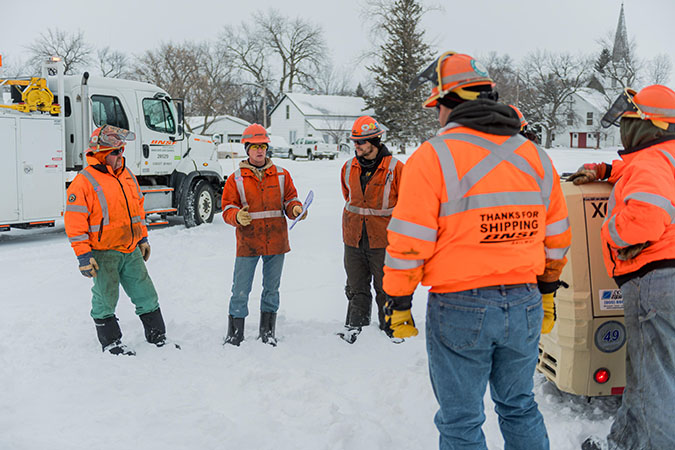
“The goal of our winter action plans is to ensure the safety of our people and to minimize service disruptions for our customers,” said Sara Johnson, vice president, North Region Operations. “Significant weather events continue to climb exponentially every year and it’s important we adapt our plans to combat weather.”
To be aware of what’s coming, we use weather modeling that uses live and historical data. We also leverage NOAA (National Oceanic and Atmospheric Administration) and any other commercially available weather station near our tracks, including those available at airports. We also have anemometers at 126 weather stations.
Knowing weather will come, our mechanical teams prepare locomotives and railcars. We stabilize locomotives’ operating temperatures by transferring more heat to the engines to prevent freezing.
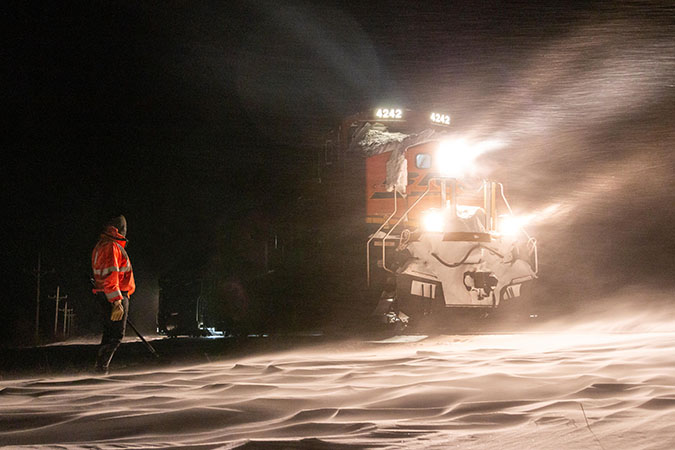
Protecting the locomotives’ air brakes from the effects of bitter temperatures is also crucial. To keep air systems on locomotives from freezing, we install heated blow downs, apply air dryers to keep water out of components and specially equip locomotives to ensure horns remain operational.
Since 2018, we’ve fully winterized 1,600 locomotives and have partially equipped another 3,600 locomotives with winter-resistant modifications. In short, 97% of our locomotives are equipped with a cold-weather package.
We’ve proactively replaced thousands of valves and gaskets in our grain railcar fleet to winterproof and increase reliability. We’ve seen a reduction in air-related service interruptions by more than 60% since beginning this initiative.
To prepare for snowfall, we deploy powerful snow-moving equipment to clear tracks. Rotary snowplows are in position and ready for use in locations we know are most-needed. Elsewhere, we have 18 snowplows, 25 Jordan spreaders and two Russell plows staged.
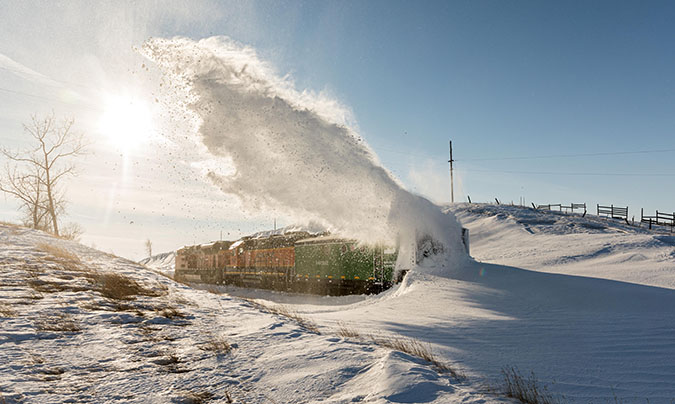
Switches are also protected from winter thanks to more than 5,100 switch heaters throughout the network. Since last winter, we’ve upgraded 150 heaters to improve reliability.
Winter action plans include preparing people. Safety briefings and bulletins remind employees of best practices for staying warm and minimizing other.
Rapid responders perform 24/7 work to quickly address issues related to weather. Our engineering team removes snow and inspects track while our mechanical team resolves car and locomotive issues.
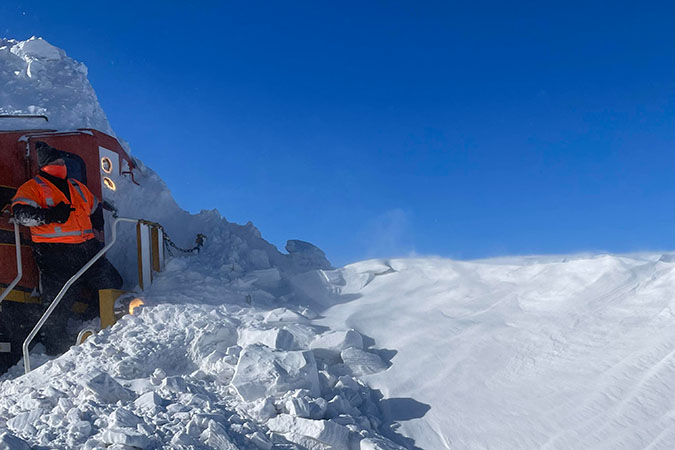
When weather strikes, we open command centers, operating primarily out of our Network Operations Center in Fort Worth, Texas. Here they focus on:
-
Adjusting transportation service plans based on conditions
-
Planning routes to avoid storms
-
Deploying snow coaches to transport employees when highways are impacted or closed
-
Managing train size based on temps
-
Managing distributed power to maintain consistent air pressure
No matter what winter has in store for us, BNSF is more prepared than ever to safely and reliably deliver on our promise to customers.
For more on how we manage our winter operations visit www.bnsf.com/winter.
